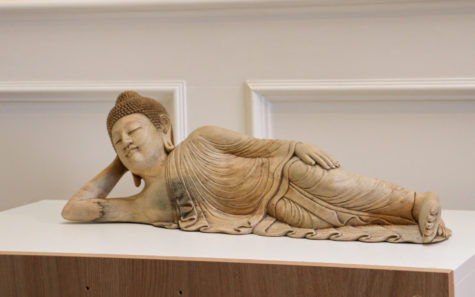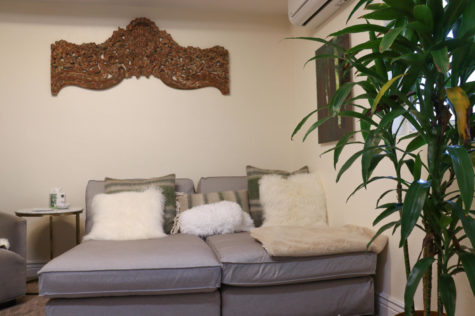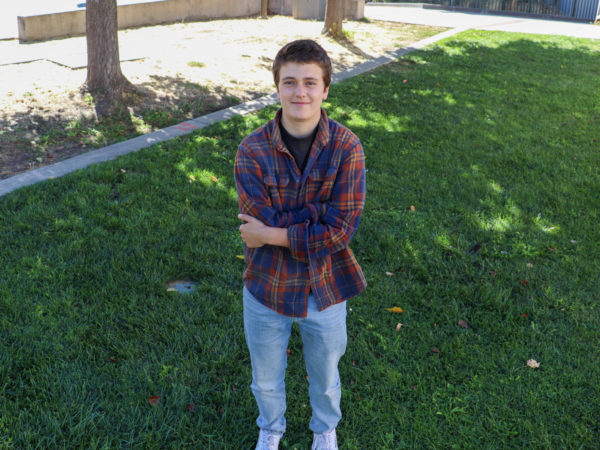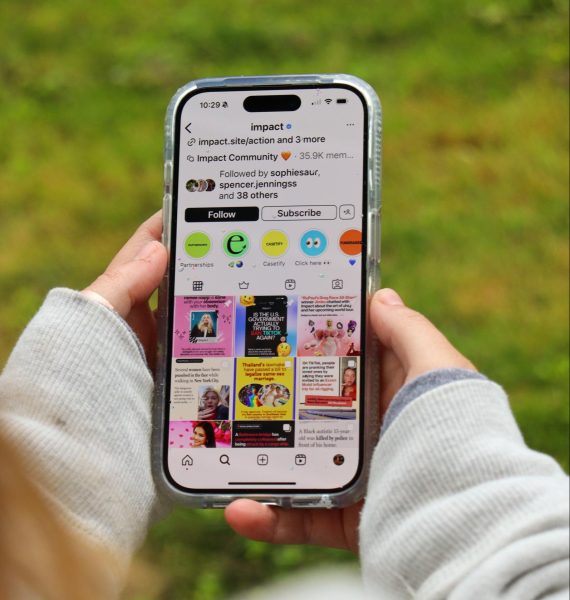The Rise of Ketamine Assisted Therapy: from street drug to lifesaving treatment
Ketamine Hydrochloride is the drug administered during patient treatment sessions.
Mental illnesses can be for life. It is something many struggle with every day, riding waves of highs and lows, but never fully recovering. But at The Center for Transformational Psychotherapy, it is the opposite: curing, not coping, is the goal.
Tucked away on an unassuming residential street in San Anselmo, the center treats patients with severe mental illness or trauma using doses of Ketamine, an anesthetic drug with hallucinogenic effects. Ketamine was first manufactured in the 1960s as a tranquilizer for horses, but has since been used to treat various conditions in both humans and animals. Hospitals use Ketamine in extremely high doses to sedate patients before surgery or to cope with severe pain.
At the clinic, every suite is adorned with LED light strips, patterned wall hangings, blankets, reclining chairs, and speaker systems. Five practitioners – two psychiatrists and three therapists – run the clinic. Although they have varying roles in the psychotherapy experience, the practitioners share a similar working field to ensure a safe, healthy environment for their patients.
“The psychiatrists have a background of medicine, whereas the therapists have a background in psychotherapy. Both are crucial to our practice of [Ketamine Assisted Psychotherapy (KAP)] and sessions here, as we find the most success in our knowledge of both areas – medicine and psychotherapy integrated. Our clinic is heavily focused on the psychotherapy aspect of KAP, which all of our practitioners are trained in doing,” said Julane Andries, Licensed Marriage and Family Therapist, who is a practicing psychotherapist at the clinic.

Patients come to the clinic seeking relief from a wide range of illnesses, including anxiety, depression, Post Traumatic Stress Disorder, Obsessive Compulsive Disorder, eating disorders, body dysmorphia, and suicidal ideation. The clinic’s website highlights the studied benefits of KAP to potential clients: “When taken with proper care… the drug may help severely suicidal or depressed patients get effective and fast treatment. Individuals taking Ketamine either during therapy or at home may experience positive changes in cognition, mood, and personality during treatment and in the days and weeks that follow.”
Prior to receiving treatment, prospective clients are administered several online or handwritten forms to identify their levels of anxiety, childhood trauma, PTSD, and other indicators of their psychiatric state. Kaila Green, the clinic’s Administrative Assistant, works through responses, identifies candidates for treatment, and matches them with practitioners. According to Green, clients will often have preferences towards the practitioners they receive treatment from. Sometimes, clients will request therapists or psychiatrists of a specific gender. The clinic’s practitioners also have backgrounds in varying areas of study, which helps to identify the best fit for patients. Green explained that one practitioner, Dr. Heather Renz, practiced as a past OB/GYN, and so she has paired Dr. Renz with patients suffering from postpartum depression.
Once a patient is approved for treatment, they will schedule an intake appointment, typically with a therapist and a psychiatrist. The clinic works on a case-by-case basis, but they find that the combination of both practitioners works well with the multifaceted nature of KAP. During the hourlong intake, either through Zoom or in-person at the clinic, practitioners will conduct a screening of the patient and create a personalized treatment plan.
“[During the intake] they would be doing a full medical screening and getting to know the client, because we never want to just start someone out [on Ketamine] without having a relationship already built, and comfortability,” Green said.
Within around two weeks of the intake, clients return for their first KAP appointment.
“There are clinics out there where Ketamine therapy is becoming more popular. A lot of these places do it in a hands-off way, where the doctor will meet with you, assess you, and then when you come in [for KAP], they will set you up in a white office space, and it’s kind of sterile, how you imagine a doctor’s office,” Green said. “Then they’ll give you the Ketamine, set up the music, and leave the room and let you be by yourself. When it’s over they’ll come and get you, make you sit, give you a juice box, and that’s it. But here we are very much hands-on and integrative.”
KAP appointments are three hours long: the first hour is talk therapy, followed by the administration of Ketamine and guidance from practitioners during the patient’s two hour journey. The clinic provides Mindfolds, specialty blindfolds that block light while allowing patients to open and close their eyes with ease. Practitioners will also play soothing or spiritual music to assist clients through their Ketamine experience.
At the first appointment, patients receive sublingual lozenges. Each lozenge is 100 mg, and practitioners will typically administer one to three, depending on body mass and metabolism, alongside other factors. Patients are instructed to hold the lozenge in their mouth for 12-15 minutes, and then swallow. After around ten minutes, the effects of Ketamine begin to kick in.
A dissociative anesthetic, patients under Ketamine feel a combination of sedative, psychedelic, and stimulating effects.
“It can be beautiful, serene, spiritual, sometimes frightening and difficult.”
— Julane Andries
“Depending on dosage- Ketamine state is a non-ordinary state of consciousness. It can feel like a trance state or deep meditative state and more intense sessions, one can feel as though they have left their body and are experiencing a dimension of being that is different from this state,” Andries said. “It can be beautiful, serene, spiritual, sometimes frightening and difficult.”
Depending on dosage and the patient, the experience can last anywhere from 30 minutes to 75 minutes. After the first appointment, where Ketamine is administered by lozenge, practitioners administer through intramuscular injection – a shot in the arm. Following each Ketamine experience, practitioners look for changes in anxiety, depression, overall well being, the client’s sensitivity to the medicine, and the dosage. They ask clients to describe psychedelic experiences, if they occurred, if they felt a sense of euphoria, or a “time out” from their ordinary mental state. They ask if they had a reduction in “negative” thoughts or feelings, and ease in accessing “positive or loving” feelings.
Aside from the in-office appointments, the clinic prescribes Ketamine lozenges for at-home sessions. Clients typically receive 20 lozenges, and are recommended to set up at least one home session a week. They are instructed to create a comfortable at-home environment. Similar to the experience at the clinic, the patients incorporate music and Mindfolds and ingest Ketamine on their own.
The center’s website describes Ketamine as a “Schedule III medication used in assisted psychotherapy, [and] an off-label treatment for various chronic treatment-resistant mental health conditions. Medical professionals have used this medication as an analgesic and anesthetic agent…Additionally, it aids in the treatment of spiritual, psychological, and existential crises.”
“The answer is complicated and even scientists and psychiatrists are not completely sure: Ketamine binds with the Gaba receptors in the brain; [it is also] thought that Ketamine’s ability to block the activity of synaptic receptors—the junction between neurons—called NMDA receptors and ion channels called HCN channels, allows for changes in the brain,” Andries said. “Ketamine, like other psychedelics, quiets some activity and enhances other areas of the brain’s activity that may usually be quiet.”
More recognizably, Ketamine has made its way into mainstream society as an attractive street drug.

“Of course, Ketamine is used as a street drug too, and a lot of times people will use it in a setting such as raves or parties, but you’re really not getting the effects of how it was intended to use when you do it like that, and it’s not similar at all to the Ketamine we use in psychiatric, therapeutic ways,” Green said.
The practitioner’s goal is not to keep clients on Ketamine – the treatment plan is similar to an arc. When they see treatment is successful, practitioners will begin to lower the dosage. The clinic does not expect clients to take Ketamine for the duration of their life, contrasting modern antidepressants or other psychiatric medications. Practitioners see KAP as experiences to aid in curing mental illnesses or disorders. And for many of their clients, the clinic was able to assist them in decreasing other medication doses or stopping them completely.
“Depression often diminishes over time, suicidal ideation in particular seems to diminish, and anxiety seems to lessen. All these effects are more robust when paired with psychotherapy rather than just the medicine itself,” Andries said. “We aren’t at liberty to give details of particular clients- but some people certainly feel they are so much better [now that] they do not need medication. And most people find their symptoms remit enough to allow them to tolerate the occasional triggers or relapsing into depression, as it does not last as long nor go as deep.”
The Center for Transformational Psychotherapy described their mission as “to assist individuals, couples, and families towards healthy minds and healthy bodies in a setting that is gentle, safe, and creative of new and freer energy for life and connection. We cultivate awareness, imagination, and loving kindness using methods that utilize the best of mainstream psychology and psychiatry and of alternative methodologies. We are particularly focused on depression and trauma–past and present–and its alleviation.”
When it comes to financing, payment for KAP is not covered by health insurance, and is not cheap. A client’s initial intake is typically $450 with both a psychiatrist and therapist present, and the following KAP appointments where Ketamine is administered are $1,450 each. Follow-up appointments without Ketamine administration range from $225 dollars to $400. Several insurance companies will partially reimburse clients for the clinic’s services without Ketamine administration but are not able to cover the full costs. The clinic does offer financial assistance for those not eligible for Medi-Cal, which is determined at the initial intake appointment.
Although the majority of clients are 18 or older, the clinic also provides treatment for minors with the involvement of their parents or guardians, as well as other requirements, such as commitment to an outside therapist who they see regularly. According to Green, parents usually seek KAP from the clinic as a last resort, having already tried many other methods of treatment for their child.
“It’s good for people to know– especially people who feel hopeless, or young people who struggle with suicidal ideation– that this can provide an experience that can give you hope and a sense of light at the end of the tunnel, when that gets diminished by mental illness,” Green said. “And before you give up, or do anything drastic, remember that there are so many things to try, and you have no idea how it could change your life.”
Your donation will support the student journalists of Archie Williams High School. Your contribution will allow us to purchase equipment and cover our annual website hosting costs. Each donation will receive a magazine subscription for a year (6 copies a year), and become a part of the important work our publication is doing.
$35 -- Subscription to the magazine
$50 -- Silver Sponsorship
$75 -- Gold Sponsorship
$100 -- Platinum Sponsorship

Alice is a senior, starting her fourth year in journalism. She enjoys hanging out with her friends and her plants, and rewatching Parks and Recreation....

Luca is a junior, in his second year of journalism. You can often find him cooking, snowboarding/skiing, or getting a nose job. He is also an avid rock...














Bridget Clark • Dec 16, 2023 at 9:31 PM
Given Matthew Perry died from an OD from Ketamine I think it’s worth a follow up statement that this drug is not recommended to be used for recreational purposes.